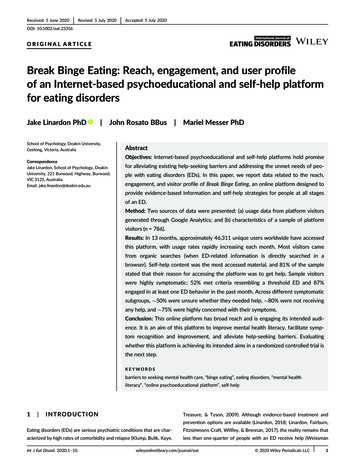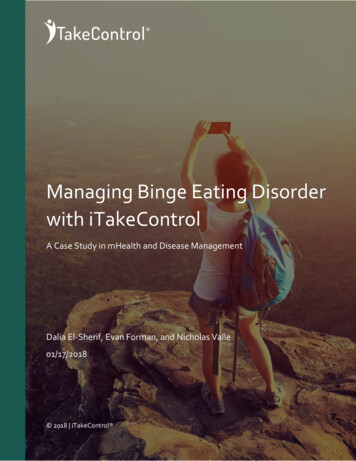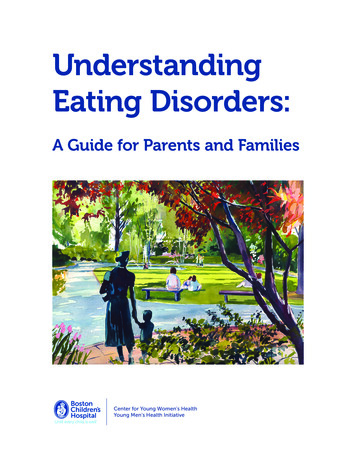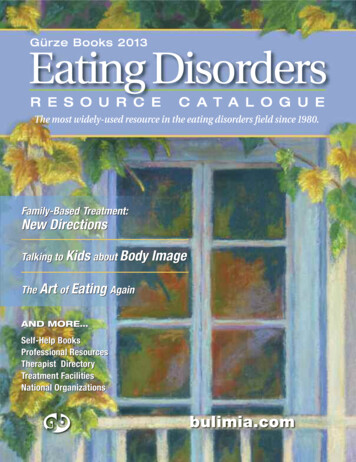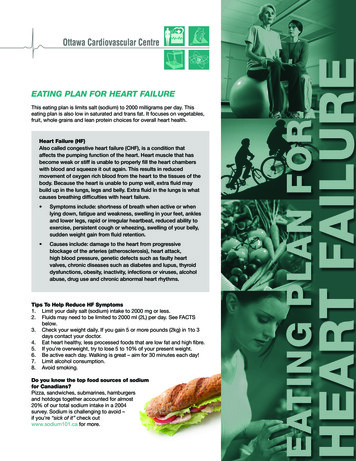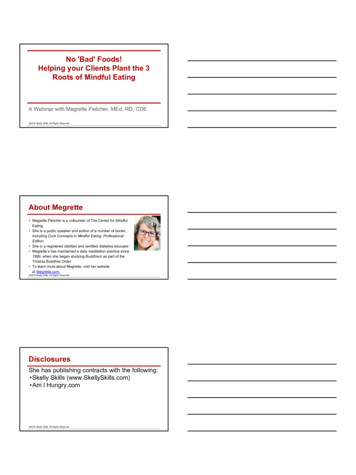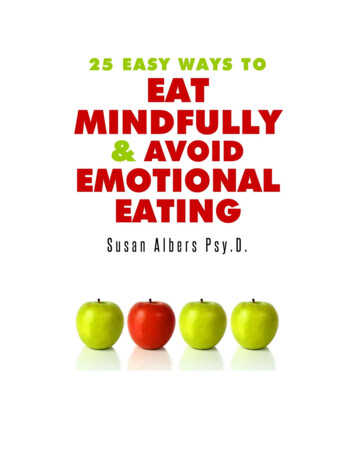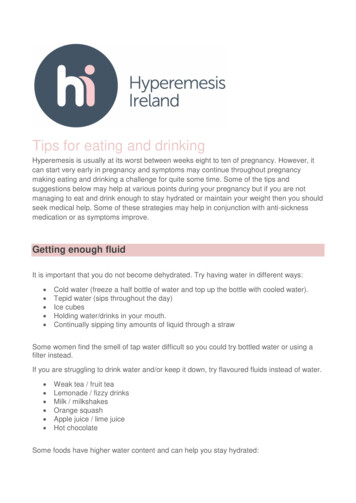
Transcription
Tips for eating and drinkingHyperemesis is usually at its worst between weeks eight to ten of pregnancy. However, itcan start very early in pregnancy and symptoms may continue throughout pregnancymaking eating and drinking a challenge for quite some time. Some of the tips andsuggestions below may help at various points during your pregnancy but if you are notmanaging to eat and drink enough to stay hydrated or maintain your weight then you shouldseek medical help. Some of these strategies may help in conjunction with anti-sicknessmedication or as symptoms improve.Getting enough fluidIt is important that you do not become dehydrated. Try having water in different ways: Cold water (freeze a half bottle of water and top up the bottle with cooled water).Tepid water (sips throughout the day)Ice cubesHolding water/drinks in your mouth.Continually sipping tiny amounts of liquid through a strawSome women find the smell of tap water difficult so you could try bottled water or using afilter instead.If you are struggling to drink water and/or keep it down, try flavoured fluids instead of water. Weak tea / fruit teaLemonade / fizzy drinksMilk / milkshakesOrange squashApple juice / lime juiceHot chocolateSome foods have higher water content and can help you stay hydrated:
Fruits (oranges, apples, grapes, melon) / tinned fruitJelly / Ice cream / ice lolliesIce cold cherries / frozen grapefruit segmentsSoupsPuddings / yoghurtsIf you can’t hold down any fluids, get treatment immediately byasking your GP, midwife or by going to A&E for rehydration byIV (intravenous) fluids.Getting enough nutritionStart by eating foods that you are most drawn to in order to keep your energy up andprevent weight loss. The colour, flavour, temperature and texture of food may impacton what you can tolerate.Many women find that they are able to tolerate specific categories of foods, such assalty or sweet foods. Be careful to follow current guidelines regarding avoidingcertain foods which may contain harmful bacteria such as paté, liver, soft cheesesand undercooked eggs.Do not worry if your diet is not thehealthiest or this is a different way tohow you normally eat.
Sample meal planEat little and often as this is one of the best ways to reduce / prevent the nausea fromworsening. Try nibbling on 100 -200 calories every hour. Sip 100 -200ml fluid everyhour. It can help to have drinks separately.Some helpful hints and tipsNausea-free times are important to increase your intake of food/fluids. Tomake the most of this opportunity: Keep a diary to become aware of nausea-free times. Have food prepared (sandwiches / ready meals / frozen batch cookedmeals).
Keep your cupboard stocked with easy meals e.g. cheese and crackers,scrambled eggs/beans on toast, tinned soup, packet noodles. Eat if you feel hungry before it turns into nausea. Nibble of your favouritefood (little and often) and stop eating as soon as your stomach feelssatisfied.Symptoms are sometimes worse in the morning: Prepare clothes and shower before bed. Do the same with children. Leave some plain biscuits beside your bed to eat when you wake up.Then wait about 15 -20 minutes before getting up. Ask for help to avoid rushing in the morning (such as helping with otherchildren). Take your folic acid later in the day/before bed if your symptoms areworse in the morning.Ask for and accept help from others to help you cope better: Friends and family can complete chores/tasks (shopping, cooking andcleaning) to allow you to get some extra rest as becoming overly tired canworsen nausea. Ask someone to reorganise your household to reduce the impact ofstrong smells (e.g. perfumes) or remove yourself from the kitchen whileothers are cooking.Remember! If these tips don’t help or you’renot keeping food and fluid down seek medicaladvice. It is important that you can eat anddrink.
worsening. Try nibbling on 100 -200 calories every hour. Sip 100 -200ml fluid every hour. It can help to have drinks separately. Some helpful hints and tips Nausea-free times are important to increase your intake of food/fluids. To make the most of this opportunity: Keep a diary to become aware of nausea-free times.





